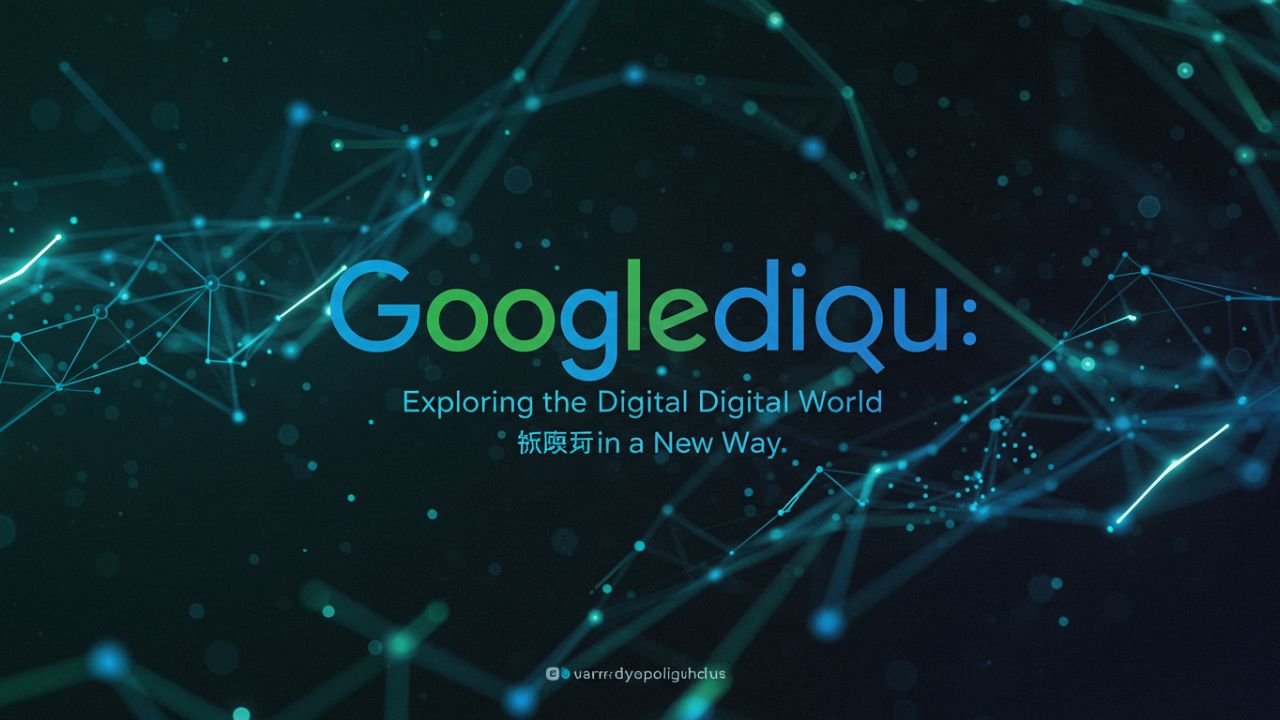The internet constantly introduces new terms, concepts, and trends that capture global attention. One such rising keyword is googlediqiu. Though it might sound unusual at first, googlediqiu is closely linked with the idea of exploring the Earth through digital platforms, advanced mapping tools, and innovative technologies.
In this article, we will break down what googlediqiu means, why it matters in today’s connected world, and how it is shaping the future of global exploration.
Understanding Googlediqiu
The word googlediqiu appears to combine “Google,” one of the largest technology companies, with “Diqiu,” a Mandarin word meaning “Earth” or “globe.” Together, it refers to the digital representation of the Earth through modern tools and platforms.
This concept reflects how people today use technology to discover, analyze, and connect with different parts of the world. From satellite views to 3D maps, googlediqiu represents a new way of engaging with our planet.
Why is Googlediqiu Important in the Digital Era?
The importance of googlediqiu lies in how it connects technology with real-world needs. Modern life depends heavily on digital exploration:
-
Students use interactive maps to understand geography.
-
Travelers rely on navigation apps to plan their routes.
-
Businesses analyze global data to identify opportunities.
-
Researchers track environmental changes through digital tools.
By linking people to accurate and interactive information, googlediqiu makes the world more accessible than ever before.
Key Features of Googlediqiu
Several features make googlediqiu a valuable concept in today’s digital environment:
1. Real-Time Maps
Interactive maps allow users to zoom in on cities, landscapes, and natural wonders across the globe.
2. Satellite Imagery
High-quality satellite views help people see the Earth from above, offering unique perspectives for learning and research.
3. 3D Visualization
Some tools associated with googlediqiu provide three-dimensional experiences, making digital exploration more immersive.
4. Cultural and Historical Insights
Users can access detailed information about countries, traditions, and historical landmarks through virtual platforms.
The Connection Between Googlediqiu and Technology
The concept of googlediqiu exists because of rapid technological advancement. Several innovations play an important role in shaping it:
-
Artificial Intelligence (AI) improves search accuracy and recommendations.
-
Global Positioning Systems (GPS) ensure precise navigation.
-
Cloud Computing enables storage of massive global datasets.
-
Augmented Reality (AR) enhances interactive experiences of maps and locations.
This combination of tools ensures that googlediqiu is more than just a digital term—it is a gateway to exploring the Earth.
Benefits of Googlediqiu Across Different Fields
The applications of googlediqiu go beyond everyday navigation. Let’s explore how different industries benefit:
1. Education
Teachers and students use googlediqiu-inspired platforms to make learning interactive. Geography, history, and environmental sciences become more engaging with digital maps.
2. Tourism
Travelers can explore destinations, discover attractions, and create itineraries with the help of global exploration tools.
3. Business Development
Companies analyze international markets, logistics routes, and regional demographics through global data powered by googlediqiu.
4. Environmental Research
Scientists monitor forests, oceans, and climate patterns with the help of satellite imagery linked to this digital concept.
The Global Appeal of Googlediqiu
One of the most fascinating aspects of googlediqiu is its universal relevance. In an interconnected world, everyone needs tools for navigation and information access. Whether you’re in Asia, Africa, or Europe, the role of digital mapping remains the same.
Additionally, as remote work and virtual education expand, the importance of googlediqiu grows further. It enables collaboration, cultural exchange, and real-time global engagement.
Challenges Faced by Googlediqiu
Like every digital innovation, googlediqiu faces some challenges:
-
Data Privacy – Users must be assured that their information remains secure.
-
Accuracy – Digital maps need constant updates to reflect real-world changes.
-
Accessibility – Developing regions with limited internet access may struggle to benefit fully.
These challenges highlight the need for ongoing improvements in digital mapping and global exploration tools.
The Future of Googlediqiu
Looking ahead, googlediqiu is expected to become even more advanced. Emerging technologies will continue to shape how we explore the Earth digitally:
-
Virtual Reality (VR) could allow people to “walk” through cities and landscapes virtually.
-
AI Integration may offer personalized global recommendations.
-
Environmental Monitoring could become more precise, helping address climate change challenges.
The future of googlediqiu is not just about maps it’s about creating deeper connections between people and the planet.
How to Make the Most of Googlediqiu
Here are some practical ways to benefit from googlediqiu:
-
Educational Use – Explore continents, cultures, and historical sites for learning.
-
Travel Planning – Research destinations and create routes efficiently.
-
Business Research – Use global data to understand new opportunities.
-
Environmental Awareness – Stay informed about global ecological changes.
Conclusion
In conclusion, googlediqiu is more than a trending keyword it’s a concept that reflects how technology is changing the way we view the world. From satellite maps to interactive learning tools, its influence is visible across education, tourism, business, and research.
As we move into a future driven by digital exploration, googlediqiu will continue to evolve, connecting people with the Earth in smarter and more immersive ways. By embracing this innovation, we open doors to a world where discovery has no limits.
